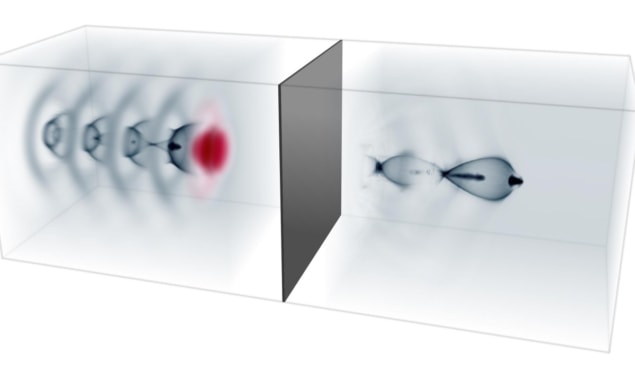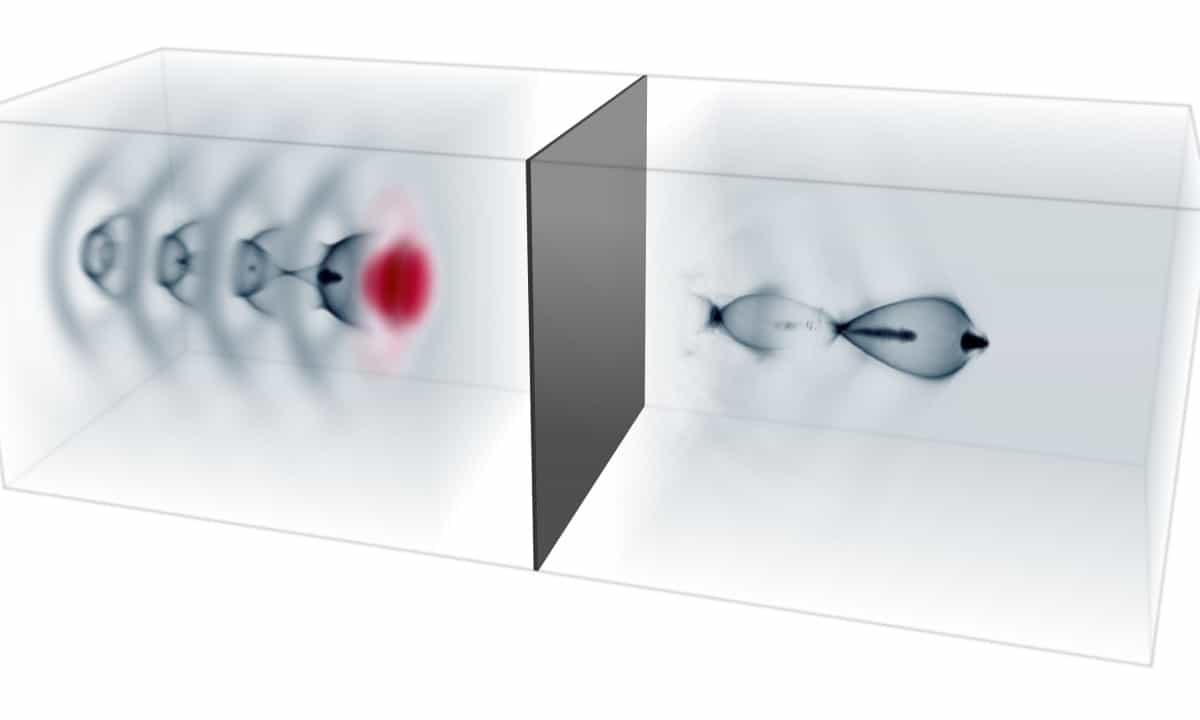
Laser wakefield acceleration and plasma wakefield acceleration have the potential to boost the energy of particle accelerators, but implementing the techniques is challenging. Now, an international team has accelerated electrons using a “laser plasma wakefield accelerator” that combines the merits of both techniques. Such accelerators could increase the number of high-energy particle physics facilities around the world, or be used to create free electron lasers that are used by a wide range of scientific disciplines.
Particle accelerators have been responsible for some of the most important discoveries in physics but the need to collide particles at ever higher energies is pushing existing technology to the limit. Conventional accelerators use radio-frequency electric fields, but the risk of damaging components through arc discharge, or even simply melting them by overheating, limits the maximum field one can apply. As a result accelerator facilities are becoming large, expensive and inaccessible to the vast majority of physicists. Indeed, there are only a handful of facilities around the world – such as the Large Hadron Collider at CERN — that can do cutting-edge particle physics research.
Wakefield accelerators are a novel alternative that use a pulse of energy to create an electric-field wave in a stationary plasma – much like a ship leaving a wake as it ploughs through water. If a trailing bunch of particles is timed properly, it can surf this wave and be accelerated much more steeply than possible in a traditional accelerator. The problem, however is creating this pulse of energy.
Pulse problems
One option is to use a laser, but laser wakefield accelerators have serious limitations: “The maximum energy that you can get from laser-driven acceleration is limited by the so-called dephasing,” explains accelerator physicist Arie Irman of Helmholtz-Zentrum Dresden Rossendorf in Germany; “The plasma wave is simply too slow compared to your accelerated electrons.” An alternative possibility, called plasma wakefield acceleration, is to inject a large bunch of high-energy “drive” particles, using the plasma as an energy-transfer mechanism to accelerate each particle in a much smaller trailing bunch to much higher energies than those in the drive bunch. However, these “plasma wakefield accelerators” still need a traditional particle accelerator to generate the drive bunch.
In 2010, Bernard Hidding – then at Heinrich Heine University in Düsseldorf and now at the University of Strathclyde – proposed combining the advantages of both by using a laser to create a plasma, which could, in turn be used to send a beam of particles through another plasma. Subsequently, several research groups have realized approximations to such a device, and now Irman, Hidding and colleagues have, for the first time, demonstrated a machine that can actually accelerate electrons.
The researchers’ accelerator is divided into two (see figure). On one side, a high-power laser pulse passes through a gas, ionizing it and sending a plasma wave into a sheet of steel foil. This reflects the laser light, but is momentarily ionized, allowing the charge from the plasma to pass through into a pre-ionized gas on the other side. A large wakefield is created in the plasma, allowing the researchers to accelerate electrons to 128 MeV in just a few millimetres – an acceleration gradient of 100 GV/m. This is at least 1000 times steeper than can be achieved by traditional accelerator.
University facilities
Although a specialist high-power laser facility was required to perform the experiment, such lasers are much more common than large particle accelerators: “For example, in the UK there are a couple of laser facilities, but no RF-driven plasma wakefield acceleration facilities, says Irman; “In the coming years, I think it will become fairly standard that even universities can afford such 100 TW lasers.”

Europe draws up plans for plasma-based particle accelerators
“This [work] is fantastic because these guys have accomplished something the field has been thinking about for years, which is to do electron-beam driven plasma-wakefield accelerator research at a university scale rather than having to rely on these very few research facilities in the world,” says plasma accelerator physicist Michael Litos of the University of Colorado in Boulder.
He believes one of the first applications may be producing X-ray free-electron lasers, which require high energy electron bunches. “Right now, the only places you can get these high-brightness X-ray laser pulses are from facilities like at SLAC, where they have the Linac Coherent Light Source…They have thousands of uses and they’re in huge demand. Before we even get to a collider, I would have said one of the dream applications for plasma accelerator technology is to produce a university-scale free electron laser.”
The research is published in Nature Communications.
